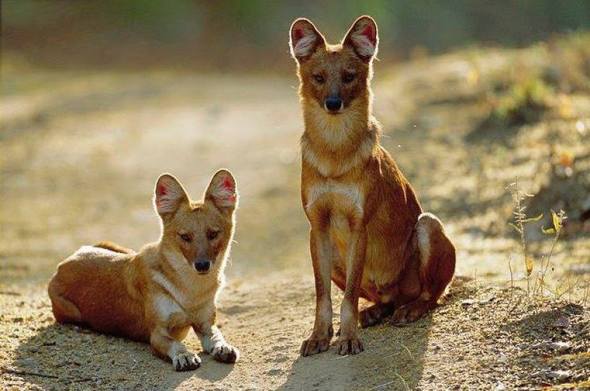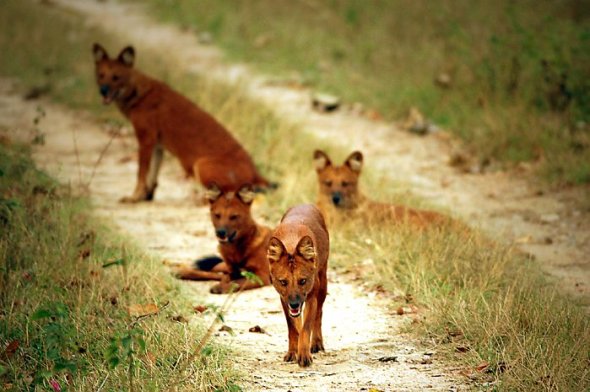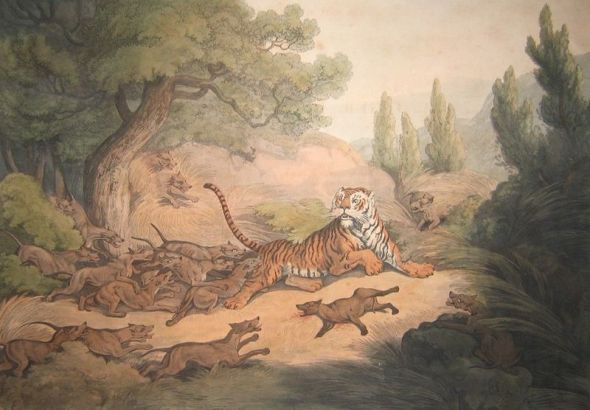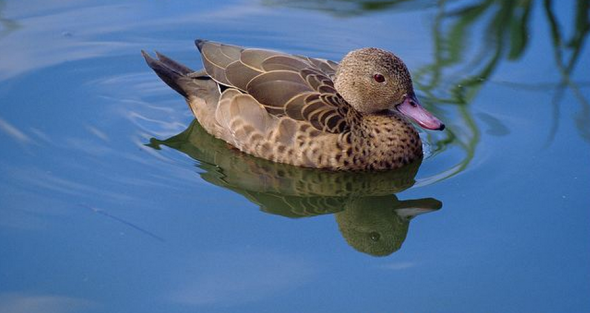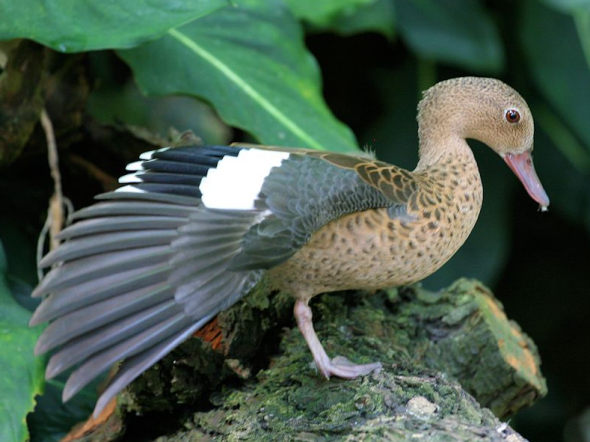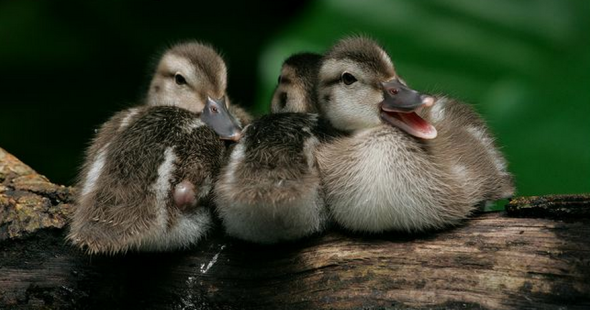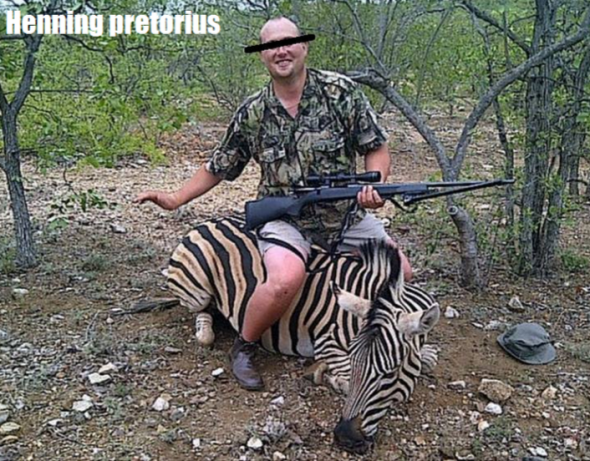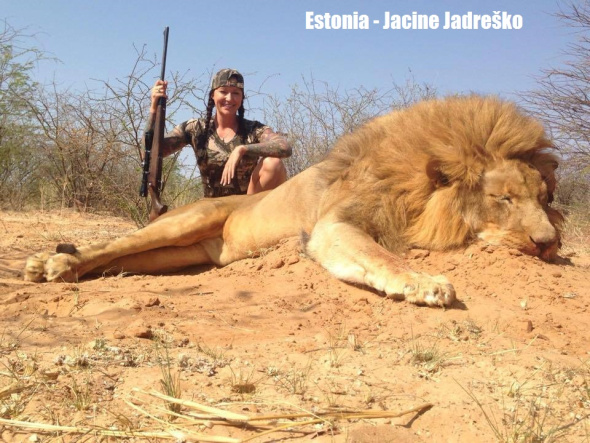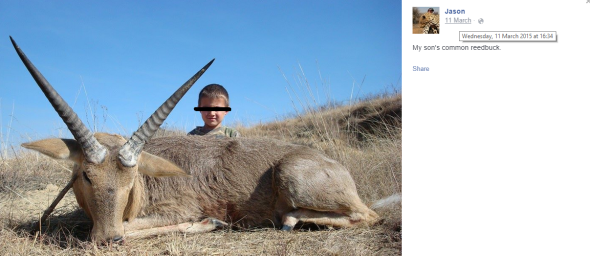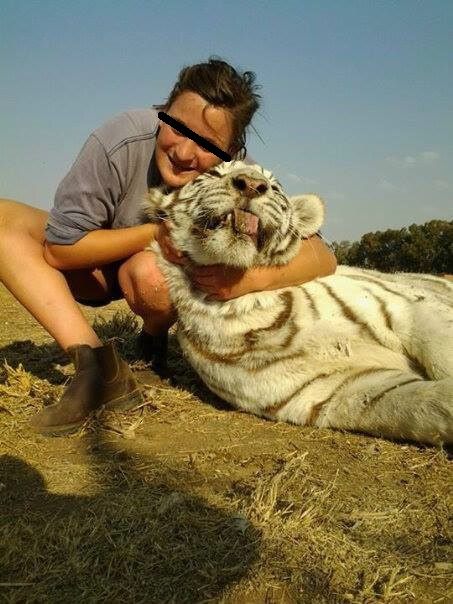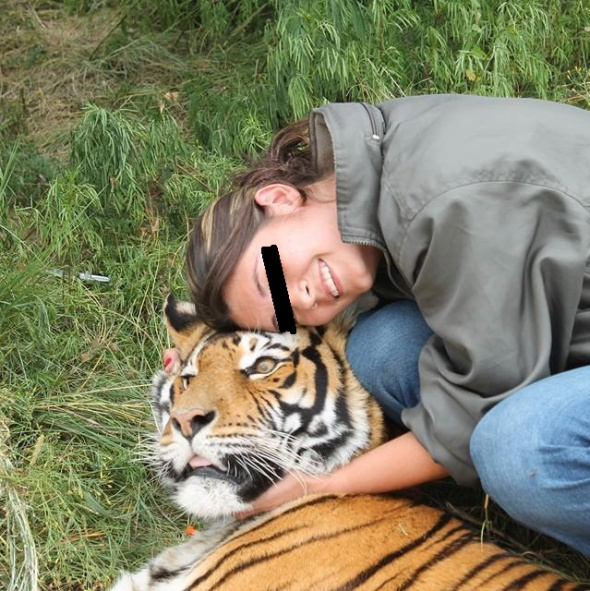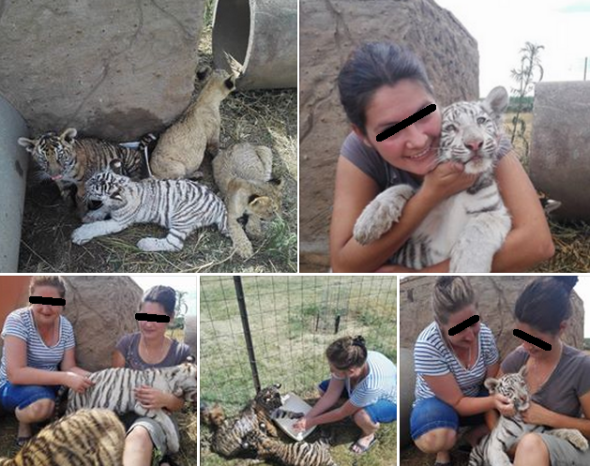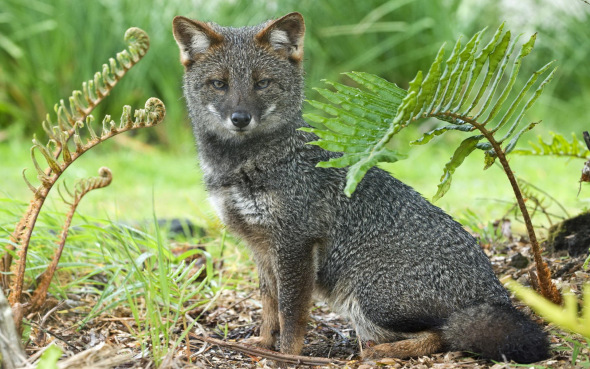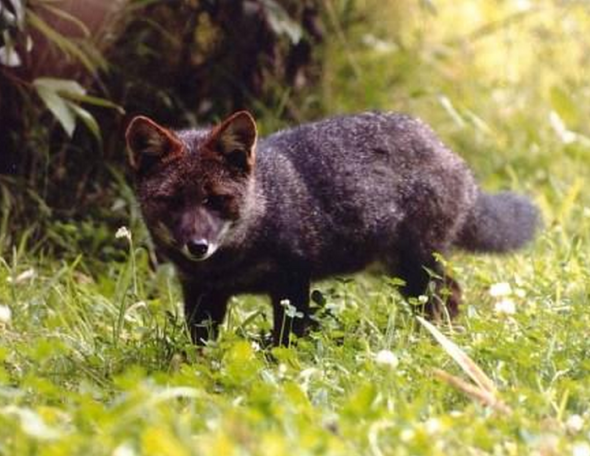Endangered Species Monday: Cuon alpinus.
Endangered Species Monday - Cuon alpinus.
Dhole - Reckless and Daring.
This Monday’s endangered species article we focus on a rather undocumented species of wild dog in the family of canidae generically identified as the Cuon alpinus back in 1811 and commonly named as Asiatic wild dog, Indian wild dog or just Red dog.
The species was scientifically named by Berlin born Dr Peter Simon Pallas (22 September 1741 – 8 September 1811) was a German zoologist and botanist who worked in Russia. A number of animals were described by Pallas, and his surname is included in their common names, including: Pallas’s cat, Pallas’s long-tongued bat, Pallas’s tube-nosed bat, Pallas’s squirrel, Pallas’s leaf warbler, Pallas’s cormorant, Pallas’s fish-eagle, Pallas’s gull, Pallas’s sandgrouse, Pallas’s rosefinch, and Pallas’s grasshopper warbler. Also, he is honored in the specific epithet of scientific names of animals described by others, including: Pallas’s pika (Ochotona pallasi), Pallas’s reed bunting (Emberiza pallasi), and Pacific herring (Clupea pallasii). (Wiki).
The Dhole is currently listed as (endangered) of which its populations are still decreasing quite rampantly. Although declines are still being documented the species remains native to Bangladesh, Bhutan, Cambodia, China, India, Indonesia, Kazakhstan, Kyrgyzstan, Lao People’s Democratic Republic, Malaysia, Mongolia, Myanmar, Nepal, Russian Federation, Tajikistan, Thailand and finally Viet Nam.
Within central eastern Asia there still remains no confirmed reports of Dhole populations of which the species was once endemic to this range. However as the species has yet to be declared extinct within countries of eastern Asia we must continue to make public that the species may still be true to this region of south east Asia. Recent reports have stated the species was seen within Jiangxi district, south China, however, outside of this area no other confirmed sightings have been noted now for some years within the Tian-Shan Range.
Few sketchy reports have vaguely confirmed that the species was seen (2006) Qilian Shan in north-western Gansu Province. Meanwhile the Dhole still remains within Tibet of which forestry officers and locals confirm the species as “commonly viewed” which is at least a positive note despite populations declines over much of the species endemic range. North Korea was once known to hold Dholes however due to the communist states strict rules and no-go-areas its difficult to document or research on the species. If North Korea does indeed hold Dholes environmental research teams must be granted entry to secure the species from any localized extinction occurring.
South of the River Ganges, India Dholes are still very commonly viewed despite large human population increases, species displacement, human species conflict and, habitat fragmentation. Central, eastern and western India Dholes are still known to inhabit again, commonly. Research teams continue to pick the species up within north eastern India in the states of Arunachal Pradesh, Assam, Meghalaya, and West Bengal too. Further reports place the species within the Ladakh area of Kashmir, which is contiguous with the Tibetan highlands in China.
In Bhutan, there have been recent press reports that Dholes have recovered from a government-initiated mass poisoning campaign in the 1970s and there have apparently been numerous recent incidents of Dholes killing livestock in the lower Kheng region. Two recent, independent, eye-witness reports identify Dholes in six protected areas in Bhutan. In some regions, Dhole predation on wild boar (Sus scrofa) may be viewed in a positive light by local people. Wild boars are known to injure and in some cases fatally wound the locals.
Reports still cannot confirm if the species is present within Bangladesh. In Indochina, Dholes probably ranged over all or almost all of Lao PDR, Cambodia, Viet Nam and Thailand, although reliable site-specific information is scarce. Present distribution is highly fragmented and large parts, particularly of Viet Nam and Thailand, are without any regular occurrence of Dholes, although they persist in a number of protected areas.
The species’ historical range probably included all or most of the Malaysian peninsula and the Indonesian islands of Sumatra and Java, but reliable information is scarce. Current distribution is poorly known but is thought to be highly fragmented. On the Malaysian peninsula, Dholes are known to occur in four sites in northern and central areas of the peninsula (from recent camera-trap surveys). On Java, Dholes appear to be most common in the protected areas at the eastern and western ends of the island. On Sumatra, very little is known, but Dholes are known to occur in major protected areas in the southern, central, and northern parts of the island (e.g., from camera trapping).. There is no reliable evidence of the presence of Dhole in Turkey.
Within some areas Dholes are known to inhabit the same areas as Tigers and Leopards however, due to increasing poaching attacks these areas are not being made public. Its quite likely though that poachers may use the Dhole as a point of interest to illegally monitor and poach Tigers and Leopards. Competition between the Dhole, Leopard and Tiger is mostly avoided due to differences in prey. Some reports have been duly noted of Dholes actually attacking Tigers causing them considerable damage and in two known cases Dhole packs have been documented as killing Tigers.
One would be led to believe that the Tiger has no real predators however, when a Dhole or Dhole pack confronts a Tiger the Tiger will on most occasions retreat up a tree or high rocky incline. Dholes are known to “mob” Tigers for a considerable time should they feel threatened or malnourished. Reports have shown that Dholes are more than able to fend off Tigers and in most cases will if threatened or in search of food maim or fatally wound the Tiger. Dholes are quite able to defend themselves too and have the canines to easily kill and take on Tigers in Tiger habitat. Interactions between the Dhole, Tiger and Leopard has been documented however very little eye accounts or video footage show such species species conflict.
One of the very earliest reports of “Indian wild dogs” attacking Tigers can be viewed below for your immediate attention and information.
Image: A Tiger Hunted by Wild Dogs (1807) by Samuel Howitt. This is one of the first illustrations of the species, featured in Thomas Williamson’s Oriental Field Sports. The depiction though is based on Williamson’s description of the animal as resembling the Indian pariah dog.
Threats
Depletion of prey base: Across almost all of Cambodia, Lao PDR, and Viet Nam, as well as within protected areas, ungulates occur at levels well below natural. All species of ungulate except muntjacs, pigs, and in some areas southern serow (Naemorhedus sumatraensis) are ecologically or fully extinct across extensive parts of the region. Only a few of the largest wildernesses support nearly intact species assemblages and even in these, the larger species (Bos spp., Cervus spp., hog deer Axis porcinus) are very rare.
This situation will likely hinder any possibility of recovery by the region’s Dhole populations, even if the other issues could be addressed. While not as depressed as in Indochina, prey levels in Indonesia also exist at levels much below carrying capacity (because of illegal hunting and habitat degradation). In protected areas in southern and central India, where Dhole numbers are stable, prey densities are high. In north-east India, prey densities are very low in protected areas with Dholes.
Habitat loss and transformation: Currently, extensive areas of natural or semi-natural vegetation remain in Lao PDR and Cambodia, some areas encompassing many hundreds of square kilometres of potential Dhole habitat. However, habitat conversion and fragmentation are proceeding apace. In Viet Nam, very few natural areas of over 50 km² remain. Habitat loss and fragmentation is a major threat to protected areas in Indonesia, particularly those on Sumatra. Habitat loss and degradation are also serious threats to Dholes in South Asia and the disappearance of Dholes from many of the forested tracts in India has been attributed in large part to loss of habitat.
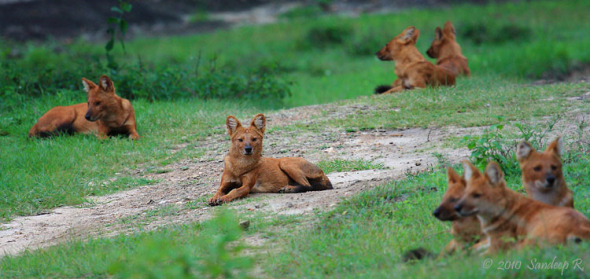
Persecution: This certainly occurs in Indochina, although it is unclear how often. In Indonesia, too, it is a threat but again its significance is unknown. In India, such persecution can play a serious role in limiting local populations. Dholes living outside or on the edge of core protected areas are particularly vulnerable to human kleptoparasitism, snaring (non-selective) and direct persecution. For example, during a radio-tracking study in 2000, in the buffer zone of Kanha Tiger Reserve, central India, at least 16 out of 24 Dholes in one pack died from a sudden strychnine poisoning. In southern India, such persecution is moderate to low and often occurs indirectly when cattle graziers and others inadvertently go close to Dhole dens and disturb adults and pups, disrupting breeding and rearing. “By-catch” in snares and other traps is probably a significant threat to Dholes across Indochina at least.
Competition with other species: Apparently, free-living dogs have been seen and/or camera trapped in many parts of Indochina, but there is no evidence for existence of large populations. Undoubtedly, the main competitor for prey species in Indochina is people. There is no evidence that feral dogs are significant competitors with Dholes in Indonesia. In many parts of their range, Dholes are sympatric with Tigers and Leopards and so the potential for significant interspecific competition for prey exists, especially if the prey populations are reduced as a result of hunting by people.
Disease and pathogens: Particularly those transmitted by feral and/or domestic dogs (e.g., mange, canine distemper, parvovirus and rabies). The significance of disease is unclear in Indochina, but diseases are a significant threat in South Asia and probably in parts of Indonesia. There is no widespread exploitation for fur or other purposes, though medicinal use should be investigated in China..
Thank you for reading.
Dr Jose C. Depre
Chief Environmental and Botanical Environmentalist (CEO)
info@international-animalrescue-foundation.org.uk
www.speakupforthevoiceless.org
www.saynotodogmeat.net
www.saynotodogmeatevents.info
www.international-animalrescue-foundation.org.uk
Endangered Species Friday: Anas bernieri.
Endangered Species Friday - Anas bernieri
This Friday’s endangered species article I focus on my eighteenth “Madagascan” species of wildlife since establishing International Animal Rescue Foundation’s Endangered Species Watch Post one and half years ago. I very much doubt too that this will by mine or the teams last such species of Madagascan native animal to print on nearing extinction, simply because the island is rapidly being overcome by humans, habitat destruction and poaching.
Endemic only to the Africans island of Madagascar the the A. bernieri as the species is scientifically known was primarily identified back in 1860 by Dr Karel Johan Gustav Hartlaub (8 November 1814 – 29 November 1900) was a German physician and ornithologist.
Dr Hartlaub was born in Bremen, and studied at Bonn and Berlin before graduating in medicine at Göttingen. In 1840, he began to study and collect exotic birds, which he donated to the Bremen Natural History Museum. He described some of these species for the first time. Dr Hartlaub has been described by many leading ornithologists as an expert in bird wildlife and conservation and, has been ranked as one of few such experts that has identified over hundreds species of birds globally.
Listed as (endangered) the species is commonly known as the Bernier’s Teal or just Madagascar Teal. The species is uncommonly viewed within western Madagascar of which it can be found along the western coast and, north east. Bernier’s Teal is known to breed at the Menabe and Melaky on the central west coast, and at Ankazomborona on the far north-west coast. Between July and August (1993) the species was observed at Antsalova and Morondava of which a census recorded a total of some 200-300 mature individuals. Back in 1998 a small flock was observed in Tambohorano totaling some 60-70 mature individuals.
Furthermore in 1998 a new a new breeding colony numbering some 200-300 mature individuals was recorded in Ankazomborona. Meanwhile the population noted at Baie de la Mahajamba was estimated to be between some 100-200 mature individuals. (Please note that due to lack of census counts and close monitoring these population numbers above may differ from any future or now census counts) however the Durrel Wildlife Conservation Trust is helping to preserve one of the worlds most incredibly rare birds.
The total mean population count of which could be lower than the last census undertaken back in 2007 stands at a pathetic and measly 1,200 to 1,700 mature individuals today. However due to mass deforestation, pollution, habitat fragmentation and destruction and, poaching, Etc, its quite possible populations of the A. bernieri have plummeted way below the last 2002 and 2007 census count.
The Madagascar Teal is of the Anas genus and is a dabbling duck. Huge areas of wetlands are being drained or altered for human activities such as farmland, rice paddies and prawn ponds. Their wooded habitat is also being destroyed for timber which effects their breeding. Due to the increase of humans in their area, hunting has also increased for so called sport and meat.
Threats
Listed on (Cites) Convention on International Trade of Endangered Species Wild Flora and Fauna the species is listed on Appendix II of which is threatened by a large number of mostly human threats. The species is now extremely threatened throughout its breeding range, by extensive habitat loss and disturbance. The distribution of known sites suggests that the single subpopulation is being fragmented as areas of habitat become unsuitable.
The species has limited dispersal capabilities and isolation may result in the loss of genetic diversity. Furthermore it is threatened by virtue of being highly specific to a series of habitats - which are themselves threatened - throughout its annual cycle. Conversion of shallow, muddy water-bodies to rice cultivation has been so widespread on the west coast that in the non-breeding season the species now appears to be confined to the few suitable wetlands that are too saline for rice-growing, i.e. some inland lakes and coastal areas such as mudflats.
In 2004, during a dry-season survey in Menabe, this species was only found in saline wetlands. Pressures on coastal wetlands are exacerbated by the movement of people from the High Plateau to coastal regions, which is driven by the over-exhaustion of land. Mangroves are under increasing pressure from prawn-pond construction and timber extraction, which also leads to massively increased hunting. Subsistence hunting during the nesting season and the trapping of molting birds are major threats too. It is considered a delicacy by hunters and was found in markets in Sofia in 2011.
See more here on the video above. http://harteman.nl/pages/anasbernieri
In contrast, the breeding site at Ankazomborona is not threatened by aquaculture and there is little pressure from subsistence hunters, though there is some pressure from “sport hunters”. Breeding birds may suffer disturbance from human activity, such as the collection of crabs. The species is potentially in competition for the use of suitable nest-holes with the Comb Duck Sarkidiornis melanotos, parrots Coracopsis species and nocturnal lemurs, Lepilemur species and Cheirogaleus species, though lemurs are absent in mangroves. Breeding is from December to March. Diet consists of mainly insects.
In all its very likely that we will lose the Madagascan Teal within the wild in next to three to five years unless conservation efforts drastically and rapidly improve and, the Madagascar Ministry of Environment and Forests tackles poaching, habitat fragmentation, destruction and human interference sooner rather than later. I personally believe from my last visit to Madagascar back in 2013 its very unlikely the M. Teal or any other species listed as critically endangered will continue to thrive for years to come. Catastrophic habitat destruction on the island is threatening hundreds of over a hundred species of medium and large mammalians.
How can I help? The “Durrell Wildlife Conservation Trust” are currently undertaking amazing captive breeding programs of the Madagascan Teal that is known to be one of the worlds most rarest birds. You can help by supporting the Durrell Wildlife Conservation Trust and making a donation to their organisation that will help increase captive breeding colonies for later release back into the wild. Even if the species cannot be released back onto the island of Madagascar (should extinctions occur), reintroduction programs elsewhere will continue to keep this species alive for future generations to come. You never know the species may be coming to a home somewhere near you soon. Please donate and contact the D.W.C.T <here for further information.
Thank you
Dr Jose C. Depre
Environmental and Botanical Scientist.
International Animal Rescue Foundation Africa.
For further information or if you’d like to help in upcoming events this year or in the future please contact the Environmental team here today. info@international-animalrescue-foundation.org.uk
Con in Conservation?
Contrary to popular belief native Africans were not the first people on the continent to pursue a career or “sport” of trophy hunting. The history of trophy hunting dates as far back to the early 1800’s when southern and central European hunters sought out large or small game. Not much has really changed since the early 1800’s although hunters did out of mutual respect show much veneration to their kill more than today’s modern hunters that flock to the continent of Africa from far and wide in their droves.
Southern and central European hunters were known to keep the trophy head or entire animal as a sign of prowess however did leave much waste of which little of that waste was provided to local villagers and communities struggling financially or in times of famine when free food was much sough after. Today most professional hunters (PH) or outfitters allege that their trophy kill’s are evenly distributed out to the local communities and villagers in dire need of food.
Today in most of Southern Africa we see a mixture of international citizens hunting animals from lion, elephant, zebra, cheetah, impala down to hippopotamus and plains game. The vast majority of hunters visiting the continent range from northern Europe where hunting has long been associated with their history. Back in the 1800’s northern European hunters within their native range would mostly hunt for meat and in Africa evidence has shown that the majority of northern European hunters do indeed demand their kill or any waste is equally handed out to local villagers and communities. After all its their tradition and a tradition in northern Europe that is steeped in history.
Sport hunting has long gotten up Animal Rights Activists noses which today’s hunting generation rarely follow any rule of the land or continue to practice the family tradition as if its a heirloom. Environmental researchers from the Environmental News and Media team have long argued now that western disrespect within today’s hunting generation is now rubbing off onto our own African citizens that have been witnessed killing animals then parading the parts of bodies of animals or jokingly fooling around with the corpse as if it was nothing more than a piece of shit on ones shoe.
One such hunter witnessed back in 2012 that our investigative team noted last year named as Mr Henning Pretorius from Krugersdorp Gauteng, South Africa didn’t just grotesquely slaughter this non-threatened Zebra below - he then set about jumping on the animals dead back jokingly fooling around and acting as if he was on some rodeo. Hardly professional hunting nor conservation. We will though give him his due respects where given of which the animal was slaughtered - however made into a rug for his own home. The meat was distributed among family members and friends which back in the 1880’s was uncommon.
Since Henning pretorius became aware of this image circulating Mr Pretorius not only demanded its removal but, has been given special cyber protection - I.e his profile has been blocked from the United Kingdom. We do find this move by Facebook rather peculiar as 1. we’re not British citizens or even residents and 2. why has he been given this rather suspicious preferential treatment? Did we touch a sore nerve. Mr Henning has also taken the rather unusual step of removing this image or at least concealing it amidst his other nauseating images that Facebook’s administration platform seems to be protecting.
Kalahri’s Historian on hunting and Animal Rights stated:
Trophy hunting is the most controversial aspect of hunting for opponents of hunting, who argue that modern economics or vegetarianism should eliminate the need for most killing of animals, if not animal domestication entirely.
They see such killing as an issue of morality, citing British fox hunting as an especially inhumane “blood sport.”
Hunting in North America in the 1800s was done primarily as a way to supplement food supplies. The safari method of hunting was a development of sport hunting that saw elaborate travel in Africa, India and other places in pursuit of trophies. In modern times, trophy hunting persists, but is frowned upon by some when it involves rare or endangered species of animal. Other people also object to trophy hunting in general because it is seen as a senseless act of killing another living thing for recreation, rather than food.
In all due respects Henning and Kalahari are nothing more than a CON in Conservation.
Africa holds the largest custodian of lions in the world. However their populations are dwindling quite rapidly. To date and based on the most recent up to date International Union for the Conservation of Natures report a population count of some 30,000 lions remain in the wild. Listed as vulnerable and nearing endangered they remain the second species within the big five that’s populations are actually declining. Central African elephant “populations” could be considered within this count too however based on census reports elephant populations within the central African republic are known to be “endangered” as a population not as an entire species.
The African lions main threat is that of habitat destruction and human species conflict with some reports of “unregulated hunting” as being problematic mostly within Tanzania. However while the IUCN lists certain dangers regarding the lion such as habitat destruction, persecution and unregulated hunting they fail to list the dramatic decrease of male African lions that are required within the prides to keep species intact. Continued hunting of males lion or even female lionesses will eventually have an adverse effect onto lion populations thus pushing this species into the realms of endangerment.
Environmental News and Media has duly noted from 2011 to 2014 a stark increase of eastern and southern European hunters visiting Africa to hunt the big five. Increases from Ukraine, Russia, Czech Republic, Poland, Romania, Slovakia, Serbia, Bosnia and Turkey have been noted. More worrying are increasing numbers of trophy hunters such as Jacine Jadreško from Croatia (pictured below).
Croatian, Albanian, Russian, Czech Republic and Polish trophy hunters are second to that of American hunters with British hunters slowly creeping up. While sport hunting is not currently considered a major threat to the species, habitat loss, a lack of prey and increasing conflict with humans are to blame for the decline in the numbers of African lions, whose numbers have dropped by two-thirds since the 1980s, according to 2014 USDA report. There were 76,000 lions in Africa in 1980, but that number has declined to about 30,000 today.
Zambia has since lifted the ban on hunting lions and cheetahs. The ban wasn’t lifted because lion and cheetah species populations began increasing but more for sustainable wildlife projects. In other words while the ban on hunting was in place funding to secure wildlife from poaching just didn’t hit the target - so - therefore Zambia has limited the ban to generate funding to preserve its natural wildlife.
A Con or practical thinking?
Environmental News and Media’s External Affairs Investigations Dept noted a stark and worrying increase of youth hunters to the continent too. Most African countries hold certain rules in place the forbid a minor under the age of sixteen from carrying or even shooting a loaded rifle. As one can see in the case below this is not so. From Howick, Kwazulu-Natal laws are being flouted daily.
Con or gun conservation?
A further worrying trend were witnessing in South Africa are tiger farms springing up everywhere in the Eastern Cape - for the gun. From 2012 to 2014 Environmental News and Media recorded a total of 63 tiger farms in the Eastern Cape. Since 2012 a further 21 have been established. Tigers are listed as critically endangered - yet are bred and for the gun.
One of the world’s largest and most iconic predators may soon go extinct in the wild - yet in South Africa the species are being bred for for the bloody gun!
Amid all the fuss over global warming and alternative energy, the continued loss of biodiversity is being largely overlooked and forgotten. And the trend may claim its highest profile victim to date in just a couple decades, say conservation groups. For at least a million years tigers have roamed the forests and jungles of Asia, ruling the top of the food chain. But today Tigers are facing a final bow from the world they once ruled as their habitats have been destroyed and their numbers slashed by poaching.
At the start of the twentieth century there were an estimated 100,000 tigers. Over the course of the last century those numbers shrank and several subspecies — the Bali, Javan, and Caspian Tigers — went extinct.
The WWF has released a new report estimating that there are now only 3,200 tigers left in the wild in India, Southeast Asia, Russia, and China. They estimate that within a generation tigers will become extinct in the wild, if drastic action is not taken to conserve them.
Sybille Klenzendorf, director of the WWF-US species conservation program comments, “There is a real threat of losing this magnificent animal forever in our lifetime. This would be like losing the stars in the sky. Three tiger subspecies have gone extinct, and another, the South China tiger, has not been seen in the wild in 25 years.”
World Bank, a multinational financial institution that provides loans to developing countries, is partnering with the WWF in a push to save the beasts.
Keshav S. Varma, program director of the World Bank’s Global Tiger Initiative comments, “Unless we really crack down on illegal trade and poachers, tigers in the wild have very little chance. If the tigers disappear, it is an indication of a comprehensive failure. It’s not just about tigers. If you save the tiger, you are going to save other species. It provides an excellent indicator of commitment to biodiversity. If they survive, it shows we are doing our job right. If they disappear, it shows we are just talking.”
Despite the fact that so few tigers remain, demand for their body parts is at an all time high on the Asian black markets. Crawford Allan, director of TRAFFIC-North America, which monitors the trade in wildlife, comments, “The demand for bones and skin, meat, and even claws and teeth … is driving a major crime campaign to wipe tigers out in the wild.”
Lixin Huang, president of the American College of Traditional Chinese Medicine has teamed with the WWF to try to fight Chinese natives from using tiger parts in their traditional remedies. States Huang, “Traditional Chinese medicine does not need tiger bones to save lives. What we are dealing with is an old tradition, an old belief that tiger wine can make their bones stronger. That is not medicine, that is from old tradition.”
The WWF’s ambitious goal is to try to get the tiger population doubled to 6,400 tigers in the wild by 2022. To do that, they say they will need $13M USD a year and cooperation from the governments of Bangladesh, China, Europe, India, Indonesia, Nepal, Russia, the United States, Vietnam, and the Greater Mekong region, which stretches across Cambodia, China, Laos, Myanmar, Thailand and Vietnam.
Nearing extinction in the wild - Bred in captivity in South Africa for the gun.
Hardly Conservation is it?
Endangered Species Monday: Pseudalopex fulvipes.
Endangered Species Monday - Pseudalopex fulvipes
In this Monday’s endangered species article we focus our attention on the species of fox commonly known as the Darwin fox. Identified by Dr William Charles Linnaeus Martin (1798 - 1864). Dr Martin was an English naturalist.William Charles Linnaeus Martin was the son of William Martin who had published early color books on the fossils of Derbyshire, and who named his son Linnaeus in honor of his interest in the classification of living things.
Listed as CRITICALLY ENDANGERED the species was scientifically identified as Pseudalopex fulvipes endemic to Chile, Los Lagos. Charles Darwin collected the very first evidence of this rather stunning species back in 1834 however was not the primary identifier despite the species name. Since 1989 the fox has been re-monitored to determine its current population sizes and future classification. I am somewhat skeptical that this species will survive into the next five years even with more in-depth wild analysis - the species in my own expert opinion is doomed.
One fox was observed and captured back in 1999 for data and breeding with a further two adults captured back in 2002 in Tepuhueico. That same year it was noted a local as killing a mother and her cubs which amassed to some four Darwin foxes witnessed dead and alive within the wild since revaluation of species began from 1989. Some evidence although (little documented) has confirmed “sightings” of Darwin foxes during the year of 2002 however, these are sketchy reports.
On mainland Chile, Jaime Jiménez has observed a small population since 1975 in Nahuelbuta National Park; this population was first reported to science in the early 1990s. It appears that Darwin’s Foxes are restricted to the park and the native forest surrounding the park. This park, only 68.3 km² in size, is a small habitat island of highland forest surrounded by degraded farmlands and plantations of exotic trees. This population is located about 600 km north of the island population and, to date, no other populations have been found in the remaining forest in between.
Darwin’s Fox was reported to be scarce and restricted to the southern end of Chiloé Island. The comparison of such older accounts (reporting the scarcity of Darwin’s fox), with recent repeated observations, conveys the impression that the Darwin’s Fox has increased in abundance, although this might simply be a sampling bias.
As explained even with a very, very small increase in sightings - populations are declining and sadly we may be reporting in the next year or two an (extinction in the wild) occurring if not a complete extinction overall. Should that happen we’ve lost the entire species for good.
Darwin foxes are said and known to be forest dwelling mammals which could be why environmental surveys are proving to be fruitless. Darwin foxes occur only in southern temperate rainforests. Recent research on Chiloé, based on trapping and telemetry data on a disturbance gradient, indicates that, in decreasing order, foxes use old-growth forest followed by secondary forest followed by pastures and openings. Although variable among individuals, about 70% of their home ranges comprised old-growth forest.
Protected under Chilean law since 1929 the Darwin fox are listed on Cites Appendix II (Convention on International Trade of Endangered Species wild flora and fauna). Conservation actions that are under way in the Nahuelbuta National Park are to increase species populations and establish overall protection within this range. Temuco zoo did hold one single species of which was believed to be held for protective captive breeding however the fox has since died back in 2000.
Threats
Although the species is protected in Nahuelbuta National Park, substantial mortality sources exist when foxes move to lower, unprotected private areas in search of milder conditions during the winter. Some foxes even breed in these areas. This is one of the reasons why it is recommended that this park be expanded to secure buffer areas for the foxes that use these unprotected ranges.
The presence of dogs in the park may be the greatest conservation threat in the form of potential vectors of disease or direct attack. There is a common practice to have unleashed dogs both on Chiloé and in Nahuelbuta; these have been caught within foxes’ ranges in the forest. Although dogs are prohibited in the national park, visitors are often allowed in with their dogs that are then let loose in the park.
There has been one documented account of a visitor’s dog attacking a female fox while she was nursing her two pups. In addition, local dogs from the surrounding farms are often brought in by their owners in search of their cattle or while gathering Araucaria seeds in the autumn. Park rangers even maintain dogs within the park, and the park administrator’s dog killed a guiña in the park. Being relatively naive towards people and their dogs is seen as non-adaptive behaviour in this species’ interactions with humans.
The island population appears to be relatively safe by being protected in Chiloé National Park. This 430 km² protected area encompasses most of the still untouched rainforest of the island. Although the park appears to have a sizable fox population, foxes also live in the surrounding areas, where substantial forest cover remains. These latter areas are vulnerable and continuously subjected to logging, forest fragmentation, and poaching by locals. In addition, being naive towards people places the foxes at risk when in contact with humans. If current relaxed attitudes continue in Nahuelbuta National Park, Chiloé National Park may be the only long-term safe area for the Darwin’s Fox.
No commercial use. However, captive animals have been kept illegally as pets on Chiloé Island.
Current estimates place the species population count at a mere 250 left within the wild.
Thank you for reading.
Please share and lets get this fox the protection it requires through education, awareness and funding.
Links for interest:
Adopt a Darwin Fox.
General Information.
Dr Jose C. Depre.
International Animal Rescue Foundation Africa.
info@international-animalrescue-foundation.org.uk
International Animal Rescue Foundation Africa.
Donate to Say No To Dog Meat today.

